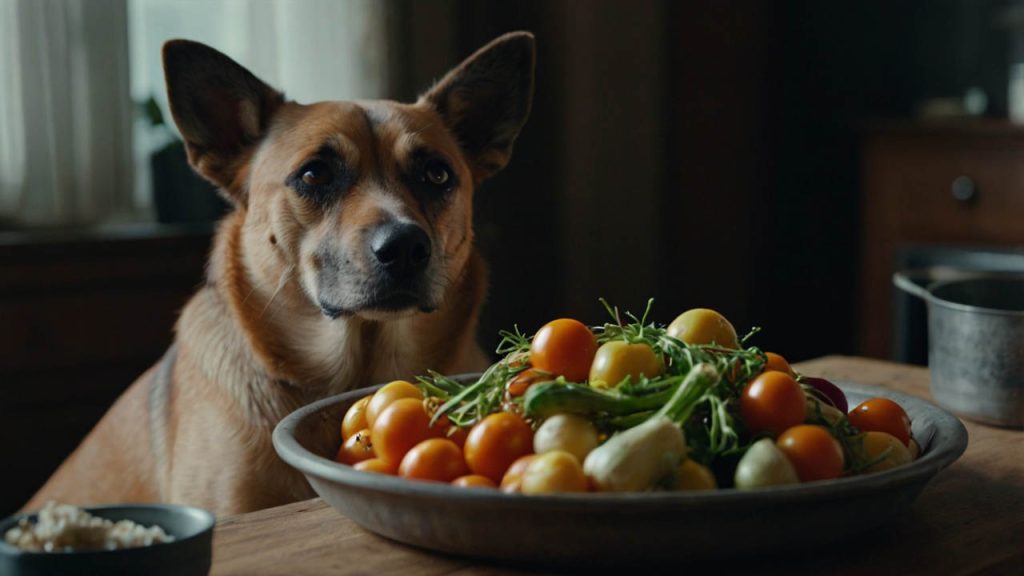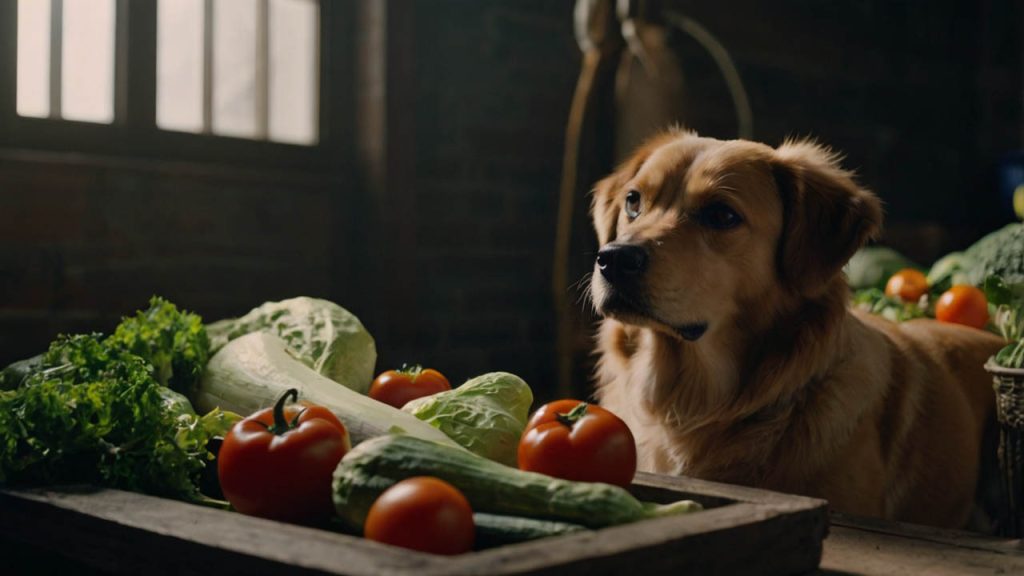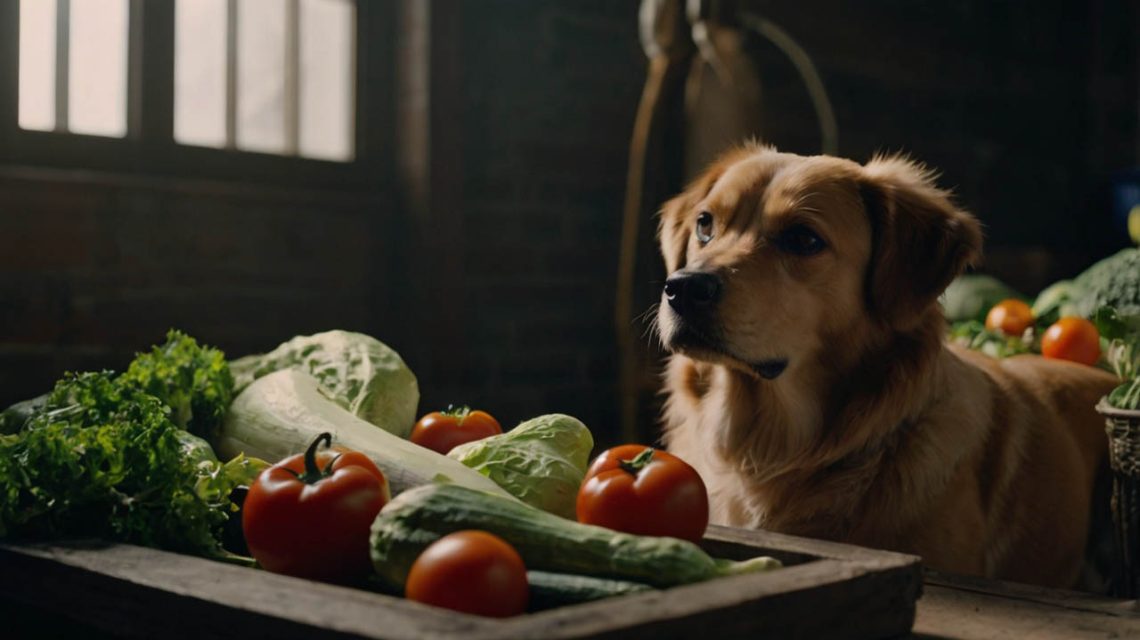Introduction: Protecting Your Dog from Toxic Vegetables
Understanding what vegetables can dogs not eat could literally save your pet’s life, as certain common vegetables that humans consume safely prove highly toxic or even fatal to our canine companions. According to the ASPCA Animal Poison Control Center, vegetable-related toxicity accounts for approximately 15% of all plant poisoning cases in dogs annually, with many incidents occurring because well-meaning owners unknowingly share dangerous foods. Moreover, veterinary emergency rooms report that cases involving toxic vegetable consumption have increased by 30% over the past decade as more pet owners attempt to supplement their dogs’ diets with fresh produce.
The critical importance of knowing what vegetables can dogs not eat becomes evident when considering that toxicity symptoms can range from mild gastrointestinal upset to organ failure and death. Research from the Pet Poison Helpline reveals that certain vegetables contain compounds that dogs cannot metabolize properly, leading to accumulation of toxins that damage red blood cells, kidneys, or nervous systems. Furthermore, the severity of reactions varies based on the dog’s size, the amount consumed, and individual sensitivity, making prevention through education the most effective protection strategy.
Identifying harmful vegetables requires understanding both obvious dangers and hidden risks in seemingly innocent foods. While some toxic vegetables cause immediate, dramatic symptoms, others create cumulative damage over time through repeated small exposures. Therefore, this comprehensive guide examines scientifically documented toxic vegetables, their dangerous compounds, symptoms of poisoning, and crucial emergency response protocols to help you protect your beloved companion from accidental poisoning.
What Vegetables Can Dogs Not Eat: The Most Dangerous
Onions and Garlic – The Deadly Alliums
Onions and garlic top the list when identifying what vegetables can dogs not eat due to their severe toxicity that affects all dog breeds. These vegetables contain N-propyl disulfide and thiosulfate compounds that destroy red blood cells, causing hemolytic anemia that can prove fatal without treatment. Subsequently, even small amounts consumed regularly accumulate in the system, making any exposure dangerous regardless of preparation method.
The toxicity of allium vegetables extends to all forms—raw, cooked, powdered, or dehydrated—with concentrated forms like garlic powder being especially dangerous. Research indicates that garlic toxicity occurs at doses as low as 5 grams per kilogram of body weight, while onion toxicity begins at 15-30 grams per kilogram. Furthermore, symptoms may not appear immediately, often developing 1-4 days after consumption as red blood cell damage progresses.
Japanese breeds including Akitas and Shiba Inus show increased sensitivity to allium toxicity due to genetic factors affecting their red blood cells. Symptoms include weakness, lethargy, pale or yellow gums, dark-colored urine, vomiting, and elevated heart rate. Moreover, chronic low-level exposure through table scraps or foods seasoned with onion or garlic powder creates cumulative damage that owners might not connect to the source.

Wild Mushrooms and Toxic Varieties
Understanding what vegetables can dogs not eat includes recognizing the extreme danger posed by wild mushrooms. While technically fungi rather than vegetables, mushrooms commonly appear in yards and parks where dogs roam. Certain species like Amanita phalloides (Death Cap) can cause fatal liver and kidney failure within hours of consumption, making immediate veterinary intervention critical for survival.
The challenge with mushroom toxicity lies in accurate identification, as many toxic varieties closely resemble safe ones. Veterinary toxicologists report that even experts struggle to identify mushrooms from partially chewed remains in vomit or stool. Subsequently, any wild mushroom consumption should trigger immediate veterinary consultation, as waiting for symptoms could prove fatal.
Store-bought mushrooms like button, portobello, or shiitake are technically safe when plain and cooked, but many veterinarians recommend complete avoidance. This precautionary approach prevents dogs from developing interest in mushrooms that might lead to tragic wild mushroom consumption. Furthermore, mushrooms offer minimal nutritional value to dogs, making the risk-benefit ratio unfavorable.
Nightshade Vegetables: What Vegetables Can Dogs Not Eat
Tomatoes and Their Hidden Dangers
Tomatoes present complex risks when determining what vegetables can dogs not eat safely. Green tomatoes and tomato plants contain solanine and tomatine, glycoalkaloid compounds that cause gastrointestinal upset, weakness, confusion, and drowsiness. Subsequently, dogs with access to vegetable gardens face particular risk from consuming unripe tomatoes or chewing tomato plant stems and leaves.
Ripe red tomatoes contain significantly lower toxin levels, leading some to consider them safe in small amounts. However, veterinary nutritionists generally recommend avoiding tomatoes entirely due to variable toxin content and individual dog sensitivity. Moreover, many tomato-based products contain additional ingredients like garlic or onions that compound toxicity risks.
Symptoms of tomato plant poisoning include hypersalivation, loss of appetite, severe gastrointestinal upset, diarrhea, drowsiness, confusion, behavioral changes, weakness, and slow heart rate. Large quantities can cause more severe symptoms including tremors and seizures. Furthermore, the leaves and stems contain highest concentrations of toxic compounds, making garden access particularly dangerous.
Raw Potatoes and Green Potatoes
Raw potatoes rank high among what vegetables can dogs not eat due to solanine content that increases dramatically in green potatoes or those with sprouts. This toxic compound affects the nervous system, causing vomiting, diarrhea, confusion, and in severe cases, cardiac issues. Subsequently, proper potato storage away from light prevents greening and reduces toxicity risk.
Cooked potatoes without skin, seasonings, or green areas are generally safe in moderation, though they offer limited nutritional value. The cooking process reduces but doesn’t eliminate solanine, making portion control important. Furthermore, fried potatoes or those prepared with butter, salt, or other seasonings become dangerous due to added ingredients and high fat content.
Sweet potatoes, despite the name similarity, belong to a different plant family and don’t contain solanine. This makes them a safer alternative for dogs when cooked plain. However, confusion between regular and sweet potatoes contributes to accidental poisoning incidents, emphasizing the importance of proper identification.
What Vegetables Can Dogs Not Eat: Lesser-Known Dangers
Rhubarb Leaves and Stalks
Rhubarb deserves serious attention when learning what vegetables can dogs not eat due to its extreme oxalate content. The leaves contain dangerously high concentrations of oxalic acid and other compounds that cause kidney failure, while even the stalks consumed by humans contain levels potentially harmful to dogs. Subsequently, dogs with access to gardens containing rhubarb face significant poisoning risk.
Oxalate poisoning from rhubarb causes immediate oral irritation, excessive drooling, vomiting, diarrhea, and lethargy. More severe cases develop tremors, increased urination followed by kidney failure, and potentially death. Furthermore, the combination of soluble and insoluble oxalates creates both immediate irritation and systemic toxicity.
The danger increases during rhubarb’s growing season when curious dogs might sample plants in gardens. Symptoms can develop within hours of consumption, with kidney damage potentially occurring before owners realize exposure happened. Moreover, treatment requires aggressive supportive care including intravenous fluids and monitoring of kidney function.
Corn on the Cob Hazards
While corn kernels themselves aren’t toxic, corn on the cob represents a serious danger that many don’t consider when thinking about what vegetables can dogs not eat. Dogs often swallow large pieces or entire cobs that cannot be digested, causing life-threatening intestinal blockages requiring emergency surgery. Subsequently, the fibrous cob material doesn’t break down in digestive fluids, creating perfect obstruction risks.
Veterinary surgeons report that corn cob ingestion ranks among the most common causes of foreign body obstructions requiring surgical intervention. Symptoms include vomiting, loss of appetite, abdominal pain, inability to defecate, and lethargy. Furthermore, delays in treatment can lead to intestinal perforation, peritonitis, and death.
The appealing smell and taste of buttered corn cobs from barbecues or dinner tables make them particularly attractive to dogs. Even small pieces can cause problems in smaller dogs. Moreover, the gradual development of obstruction symptoms means owners might not immediately connect illness to corn cob consumption days earlier.
Avocado: What Vegetables Can Dogs Not Eat
Understanding Persin Toxicity
Avocados contain persin, a fungicidal toxin that affects dogs differently than humans, making them dangerous when considering what vegetables can dogs not eat. While the flesh contains lower persin levels than the pit, skin, or leaves, any part can cause problems. Subsequently, the high fat content in avocado flesh can trigger pancreatitis even without persin toxicity.
The avocado pit presents multiple dangers beyond persin content. Its size creates choking and obstruction hazards if swallowed, often requiring surgical removal. Furthermore, the hard pit can crack teeth if dogs attempt to chew it, leading to dental emergencies and infections.
Symptoms of avocado toxicity include vomiting, diarrhea, abdominal pain, and difficulty breathing in severe cases. Pancreatitis from high fat content causes additional symptoms including hunched posture, fever, and repeated vomiting. Moreover, some dogs show greater sensitivity to persin, making any exposure potentially dangerous.
Geographic and Variety Considerations
Different avocado varieties contain varying persin levels, complicating risk assessment. Guatemalan varieties generally contain higher levels than Mexican or West Indian types. However, accurate variety identification proves difficult for average consumers, making complete avoidance the safest approach.
Dogs in avocado-growing regions face increased exposure risk from fallen fruit in yards or during walks. The decomposing fruit may be more appealing to dogs while containing concentrated toxin levels. Additionally, avocado trees themselves pose risks if dogs chew bark or leaves containing high persin concentrations.
Symptoms and Emergency Response
Recognizing Poisoning Signs
Knowing what vegetables can dogs not eat includes recognizing poisoning symptoms for rapid response. Gastrointestinal symptoms typically appear first, including vomiting, diarrhea, excessive drooling, and abdominal pain. Subsequently, systemic symptoms develop based on the specific toxin involved.
Neurological symptoms indicate severe toxicity requiring immediate intervention. These include tremors, seizures, weakness, incoordination, confusion, and altered consciousness. Furthermore, some toxins cause delayed symptoms, making connection to vegetable consumption challenging without careful history taking.
Blood-related symptoms from vegetables like onions develop gradually. Pale or yellow gums, weakness, rapid breathing, dark urine, and collapse indicate hemolytic anemia. Moreover, these symptoms may appear days after consumption, requiring vigilant monitoring.
Emergency Actions and Treatment
When dogs consume vegetables from the list of what vegetables can dogs not eat, immediate action improves outcomes. Contact veterinary services or pet poison hotlines immediately for guidance. Subsequently, follow their specific instructions based on the vegetable involved and time since consumption.
Never induce vomiting without professional guidance, as some toxins cause more damage coming back up. Caustic substances or sharp objects like corn cobs can perforate the esophagus. Furthermore, unconscious or seizing dogs risk aspiration pneumonia from vomiting.
Gather important information for veterinary consultation including the vegetable type, amount consumed, time of ingestion, and current symptoms. Save samples or packaging if available. Moreover, transport your dog to emergency veterinary care immediately for severe symptoms or as directed by poison control.

Prevention Strategies: What Vegetables Can Dogs Not Eat
Household Safety Measures
Preventing access to toxic vegetables requires comprehensive household management. Store all vegetables securely in closed containers or refrigerators inaccessible to dogs. Subsequently, dispose of vegetable scraps in secured trash containers that dogs cannot access even when home alone.
Educate all household members about what vegetables can dogs not eat to prevent accidental feeding. Children especially need clear instructions about never sharing food without permission. Furthermore, post a list of toxic vegetables prominently in the kitchen as a constant reminder.
Guest education proves equally important for preventing poisoning incidents. Inform visitors about not feeding your dog without permission. Moreover, supervise closely during gatherings where food is present, as guests may unknowingly drop or share dangerous items.
Garden and Outdoor Safety
Protecting dogs from toxic vegetables in gardens requires thoughtful planning. Fence off vegetable gardens or use raised beds that prevent dog access. Subsequently, remove any toxic plants from areas where dogs play unsupervised.
Regular yard inspection identifies potentially dangerous mushrooms or plants before dogs encounter them. Remove mushrooms immediately upon discovery, wearing gloves and disposing in sealed containers. Furthermore, consider professional landscaping consultation to identify and remove hazardous plants.
Training plays a crucial role in outdoor safety. Teach strong “leave it” and “drop it” commands for emergency situations. Moreover, supervise dogs closely during walks, especially in areas where wild mushrooms or unfamiliar plants grow.
Long-Term Health Considerations
Chronic Exposure Effects
Understanding what vegetables can dogs not eat includes recognizing cumulative toxicity risks. Small amounts of toxic vegetables consumed repeatedly cause gradual organ damage. Subsequently, symptoms may not appear until significant damage has occurred.
Regular consumption of foods seasoned with garlic or onion powder exemplifies this risk. Many commercial foods and treats contain these ingredients in amounts that seem insignificant individually. However, daily exposure accumulates, potentially causing chronic anemia or organ stress.
Monitoring for subtle signs of chronic exposure helps identify problems early. Decreased energy, exercise intolerance, or gradual weight loss might indicate ongoing toxicity. Furthermore, regular veterinary checkups including blood work can detect developing issues before clinical symptoms appear.
Special Risk Populations
Certain dogs face increased danger from toxic vegetables requiring extra vigilance. Puppies’ developing systems may be more susceptible to toxins. Subsequently, their curiosity and tendency to explore through tasting increases exposure risk.
Senior dogs with compromised organ function tolerate toxins poorly. Existing kidney or liver disease reduces the body’s ability to process and eliminate toxins. Moreover, medications for chronic conditions may interact with toxic compounds, amplifying effects.
Small breeds face higher risk due to size-related dosing concerns. The same amount of toxic vegetable represents a larger percentage of body weight in small dogs. Additionally, their faster metabolisms may process toxins differently than larger breeds.
Conclusion: Safeguarding Your Dog’s Health
Understanding what vegetables can dogs not eat empowers you to protect your beloved companion from potentially life-threatening poisoning incidents. Throughout this comprehensive guide, you’ve learned about major toxic vegetables, their dangerous compounds, symptoms of poisoning, and crucial emergency responses. The knowledge that common household vegetables like onions, garlic, and unripe tomatoes can cause severe illness or death emphasizes the importance of vigilance in preventing access to these foods.
Remember that prevention remains your most powerful tool in protecting your dog from vegetable toxicity. No nutritional benefit from vegetables outweighs the risk of poisoning, making complete avoidance of dangerous vegetables the wisest choice. Every dog owner must take responsibility for educating household members, securing food storage, and maintaining awareness of environmental hazards.
Take immediate action by conducting a thorough audit of your home and yard for potentially dangerous vegetables and plants. Create a clearly visible list of toxic vegetables for your kitchen, and ensure all family members understand the dangers. Save emergency veterinary contact numbers and the Pet Poison Helpline (855-764-7661) in your phone for rapid access. Most importantly, remain vigilant about what vegetables can dogs not eat, remembering that your awareness and preventive actions are your dog’s best protection against accidental poisoning.


